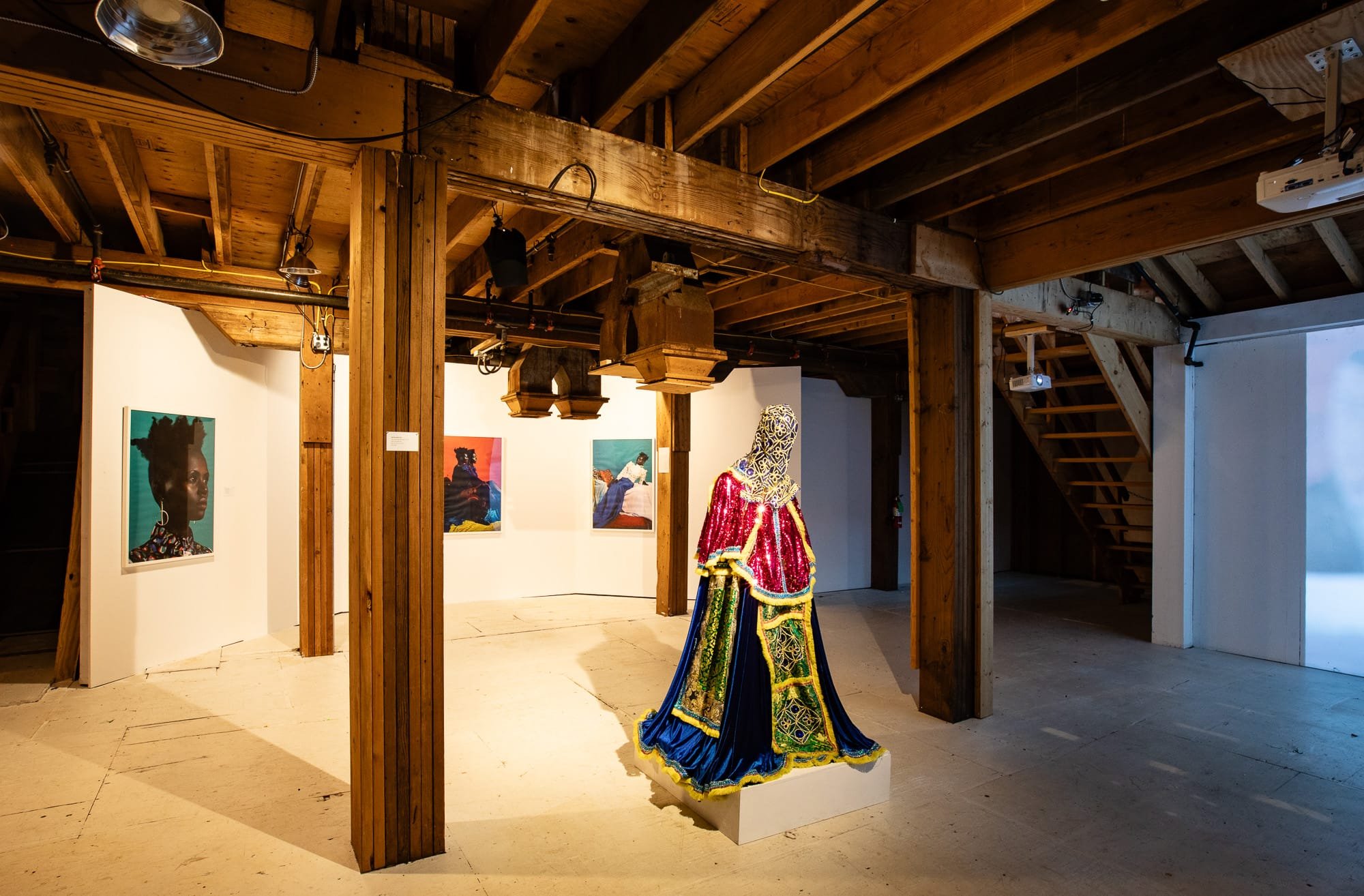'A Space Between Worlds' at Wassaic Project. / 'Abelardo Morell: In the Company of Monet and Constable' at the Clark Art Institute.
Abelardo Morell: In the Company of Monet and Constable at the Clark Art Institute, Williamstown, MA, through February 17, 2025.
Abelardo Morell, Tent-Camera Image on Ground/ Rapidly Moving Clouds Over Field, Flatford, England, #1, 2017; Photo courtesy the artist and Clark Art Institute.
Abelardo Morell (or Abe, as he is called) is perhaps best known for incongruous and unsettling photographic images resulting from his use of the camera obscura, in which he merges interior spaces like those of hotel rooms, with upside-down exterior spaces of adjacent buildings or landscapes. For the more recent photos featured in this sumptuous exhibition, Abelardo Morell: In the Company of Monet and Constable, the Cuban-born New York-based photographer used another novel photo technique employing a “tent camera.” This curious device, which he developed and refined some years ago, allows him to shoot simultaneously a distant landscape and the ground beneath his feet. The resulting images appear almost as trompe-l’oeil reliefs, with ostensibly highly textured surfaces that prove to be super-flat and ultra-slick upon closer inspection.
Abelardo Morell, Tent-Camera Image on Ground / Rouen Cathedral In Cloudy Afternoon Light, Rouen, France, 24 April 2016, 2016; Photo courtesy the artist and Clark Art Institute.
It is hard to imagine a more convincing—and gratifying—application of this technique than in a study of the landscapes that inspired the texturally nuanced Impressionist paintings by artists like Claude Monet, or the infinite landscape vistas of John Constable. In one of the most striking works one view, Tent-Camera Image on Ground/ Rapidly Moving Clouds Over Field, Flatford, England, #1 (2017), Morell merges the twigs, leaves and gravel underfoot with a Constable-inspired treelined landscape. Most of the seventeen large-scale photos in this exhibition resulted from Morell’s 3½-week 2016 residency in Giverny, the home, studio and landscape folly designed by Monet outside Paris. Tent-Camera Image on Ground / Rouen Cathedral In Cloudy Afternoon Light, Rouen, France, 24 April 2016 is the architecture study in the show. Here, meshed onto the Medieval cathedral’s façade is the elegantly pattern stoned pavement in the forecourt. In other works, Morell assigns to the painter’s famous lily pond and other landscape subjects an entirely fresh, gritty verisimilitude—likely the closest that photography has ever come to painting. A bonus of seeing these works here is you can see some of the fine paintings by Monet and Constable on view in the Clark’s permanent collection. —David Ebony
A Space Between Worlds at Wassaic Project, Wassaic, NY, through March 15, 2025.
Installation view, Jamal Ademola's presentation in A Space Between Worlds, 2024; Photo courtesy Wassaic Project.
A Space Between Worlds, the engaging winter exhibition at Wassaic Project, highlights the work of nine artists. Rather than a group show, however, the exhibition consists of separate, tightly focused solo presentations. Each artist has their own airy space, arranged among the seven floors (most unheated, so wear warm clothes) of Maxon Mills, a former grain-processing tower transformed into a highly unusual art venue. For the exhibition, co-curators Eve Biddle, Bowie Zunino, Jeff Barnett-Winsby and Will Hutnick have selected a diverse group of works in a variety of mediums. Several artists explore weaving and textile works, including refined abstract compositions by Amira Pualwan, Regina Durante Jestrow, and Paolo Arao. Within the large ground floor gallery, Dana Robinson has constructed a large tent-like structure made of pieces of found cloth used by the women in her West Indian neighborhood of Brooklyn. Inside, with chairs lining the walls, the enclosure could provide a meeting room, or simply a warm contemplative space. Elsewhere, Mary Tooley Parker presents a group of recent tapestries using a traditional hook rug technique to create folksy, domestic scenes—people places and things—with considerable charm and a large dose of humor.
Judy Suh, To the Moon and Back, 2024, in A Space Between Worlds, 2024; Photo courtesy Wassaic Project.
Curiously, there are no painters among the artists in A Space Between Worlds. Outstanding here are some of the video, photography and installation pieces. Jazmine Hayes’s video and installation explores identity via improvisational dance and personalized ritual, while Jamal Ademola’s presentation explores, among other things, Afro-Mexican identities with a glittery life-size Yoruba Egungun textile figure in the center of the room plus a video projection and related photo works. Most arresting of all, Judy Suh’s elaborate sculptural installation with computer-activated light and sound is a theatrical tour de force homage to the early cinema of George Méliès, and particularly his landmark film, A Trip to the Moon (1902). On the uppermost floor, Walker Esner used AI to help create antique-looking photos and a stunning slide show that evokes a sense of nostalgia for a past that never existed. As the show’s title suggests, each presentation offers a separate world. It is the viewer who navigates the space between them to find a connective, conceptual thread that is ultimately individual and personal. —David Ebony




